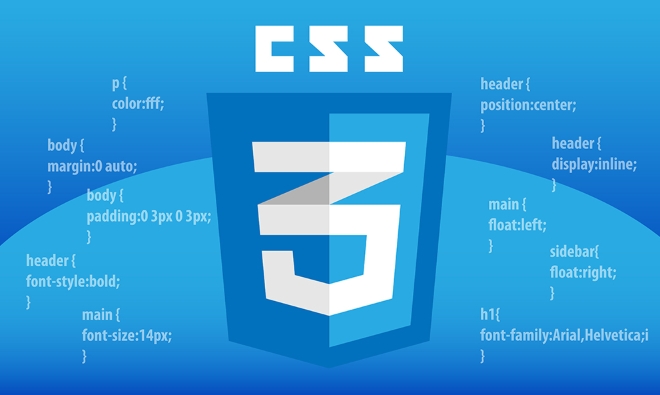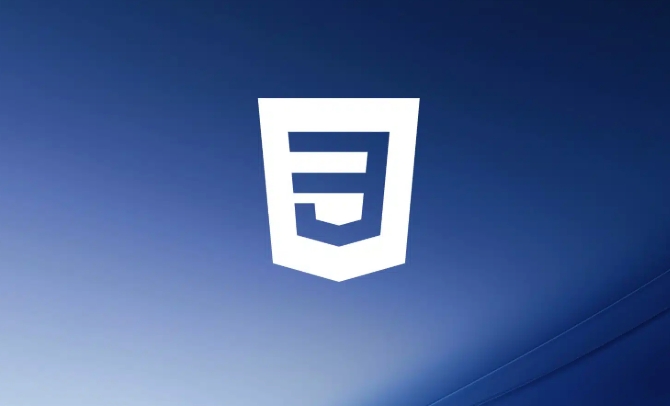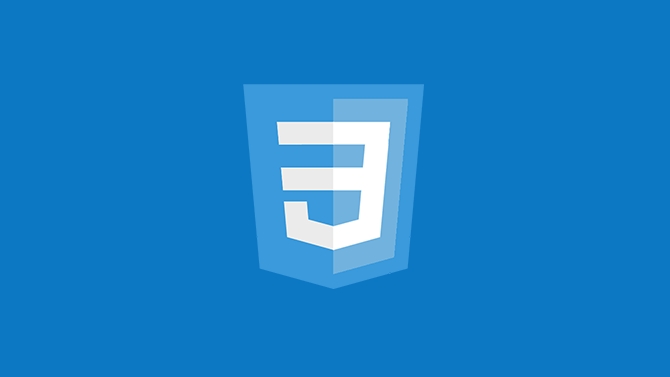 Web Front-end
Web Front-end
 CSS Tutorial
CSS Tutorial
 What is the purpose of the :is() and :where() pseudo-classes in CSS Selectors?
What is the purpose of the :is() and :where() pseudo-classes in CSS Selectors?
What is the purpose of the :is() and :where() pseudo-classes in CSS Selectors?
Jul 03, 2025 am 01:00 AM:is() and :where() are used to simplify CSS selectors, the difference is that the former affects specificity, while the latter does not. :is() reduces duplicate code by combining multiple selectors, such as ::is(h1,h2,h3,p,li) a:hover matches any link that meets the criteria and adopts the highest internal specificity; while :where() also combines selectors but does not increase specificity, which is suitable for resetting styles or avoiding conflicts, such as ::where(.highlight,.feature) background color setting will not override other rules. Common uses of the two include theme switching, component style grouping and low specific global reset to improve code maintainability and scalability.

The :is() and :where() pseudo-classes in CSS selectors are used to group multiple selectors together, making your CSS more concise and easier to manage. They're especially useful when you want to apply the same styles to several different elements without repeating yourself.

What :is() Does and When to Use It
:is() lets you write shorter, cleaner selectors by grouping similar ones into one. It matches any element that fits at least one of the selectors inside its parentses.

For example, if you want to style links differently when they're inside headings, paragraphs, or lists, instead of writing:
h1 a:hover,
h2 a:hover,
h3 a:hover,
pa:hover,
li a:hover {
color: red;
}You can simplify it to:

:is(h1, h2, h3, p, li) a:hover {
color: red;
} This makes your code easier to read and maintain. One thing to keep in mind: the specific of the entire selector is based on the most specific item inside the :is() . So if you have something like #main :is(.class, div) , the specificity will be high because of the ID selector.
How :where() Is Different
:where() works just like :is() in terms of matching elements — it also matches any element that fits one of the selectors inside. But there's one big difference: it doesn't affect specific .
This can be really handy when you want to write utility-like styles that shouldn't override other more specific rules unintentionally.
Take this example:
:where(.highlight, .feature) {
background-color: yellow;
} No matter where .highlight or .feature appears in your HTML, this rule won't interfere with other more specific styles because its specific is zero.
So if you're building reset styles, theme layers, or design systems where avoiding conflicts matters, :where() can help keep things predictable.
Practical Uses for Both
Here are some real-world ways these pseudo-classes come in handy:
? Theme switching : You can use
:is()to target multiple theme classes at once::is(.theme-dark, .theme-blue) button { color: white; }? Component-based styleling : Keep component styles grouped without repetition:
:is(.card, .panel, .widget) { padding: 1rem; border-radius: 8px; }?? Low-specific resets : Use
:where()to safely reset styles across many elements::where(*) { box-sizing: border-box; margin: 0; padding: 0; }These tricks help reduce bloat and make your CSS easier to scale.
That's basically what
:is()and:where()do — one helps you write smarter selectors with normal specification, the other does the same without affecting how your styles stack up. Not too flashy, but definitely useful once you start dealing with complex or large-scale stylesheets.The above is the detailed content of What is the purpose of the :is() and :where() pseudo-classes in CSS Selectors?. For more information, please follow other related articles on the PHP Chinese website!

Hot AI Tools

Undress AI Tool
Undress images for free

Undresser.AI Undress
AI-powered app for creating realistic nude photos

AI Clothes Remover
Online AI tool for removing clothes from photos.

Clothoff.io
AI clothes remover

Video Face Swap
Swap faces in any video effortlessly with our completely free AI face swap tool!

Hot Article

Hot Tools

Notepad++7.3.1
Easy-to-use and free code editor

SublimeText3 Chinese version
Chinese version, very easy to use

Zend Studio 13.0.1
Powerful PHP integrated development environment

Dreamweaver CS6
Visual web development tools

SublimeText3 Mac version
God-level code editing software (SublimeText3)

Hot Topics
 How can I include CSS only on some pages?
Jun 11, 2025 am 12:01 AM
How can I include CSS only on some pages?
Jun 11, 2025 am 12:01 AM
There are three ways to selectively include CSS on a specific page: 1. Inline CSS, suitable for pages that are not frequently accessed or require unique styles; 2. Load external CSS files using JavaScript conditions, suitable for situations where flexibility is required; 3. Containment on the server side, suitable for scenarios using server-side languages. This approach can optimize website performance and maintainability, but requires balance of modularity and performance.
 Flexbox vs Grid: Understanding the Key Differences in CSS Layout
Jun 10, 2025 am 12:03 AM
Flexbox vs Grid: Understanding the Key Differences in CSS Layout
Jun 10, 2025 am 12:03 AM
Flexboxisidealforone-dimensionallayouts,whileGridsuitstwo-dimensional,complexlayouts.UseFlexboxforaligningitemsinasingleaxisandGridforprecisecontroloverrowsandcolumnsinintricatedesigns.
 Creating an Auto-Closing Notification With an HTML Popover
Jun 10, 2025 am 09:45 AM
Creating an Auto-Closing Notification With an HTML Popover
Jun 10, 2025 am 09:45 AM
The HTML popover attribute transforms elements into top-layer elements that can be opened and closed with a button or JavaScript. Popovers can be dismissed a number of ways, but there is no option to auto-close them. Preethi has a technique you can u
 What is 'render-blocking CSS'?
Jun 24, 2025 am 12:42 AM
What is 'render-blocking CSS'?
Jun 24, 2025 am 12:42 AM
CSS blocks page rendering because browsers view inline and external CSS as key resources by default, especially with imported stylesheets, header large amounts of inline CSS, and unoptimized media query styles. 1. Extract critical CSS and embed it into HTML; 2. Delay loading non-critical CSS through JavaScript; 3. Use media attributes to optimize loading such as print styles; 4. Compress and merge CSS to reduce requests. It is recommended to use tools to extract key CSS, combine rel="preload" asynchronous loading, and use media delayed loading reasonably to avoid excessive splitting and complex script control.
 How to use Lotties in Figma
Jun 14, 2025 am 10:17 AM
How to use Lotties in Figma
Jun 14, 2025 am 10:17 AM
In the following tutorial, I will show you how to create Lottie animations in Figma. We'll use two colorful designs to exmplify how you can animate in Figma, and then I'll show you how to go from Figma to Lottie animations. All you need is a free Fig
 Breaking Boundaries: Building a Tangram Puzzle With (S)CSS
Jun 13, 2025 am 11:33 AM
Breaking Boundaries: Building a Tangram Puzzle With (S)CSS
Jun 13, 2025 am 11:33 AM
We put it to the test and it turns out Sass can replace JavaScript, at least when it comes to low-level logic and puzzle behavior. With nothing but maps, mixins, functions, and a whole lot of math, we managed to bring our Tangram puzzle to life, no J
 External vs. Internal CSS: What's the Best Approach?
Jun 20, 2025 am 12:45 AM
External vs. Internal CSS: What's the Best Approach?
Jun 20, 2025 am 12:45 AM
ThebestapproachforCSSdependsontheproject'sspecificneeds.Forlargerprojects,externalCSSisbetterduetomaintainabilityandreusability;forsmallerprojectsorsingle-pageapplications,internalCSSmightbemoresuitable.It'scrucialtobalanceprojectsize,performanceneed
 Does my CSS must be on lower case?
Jun 19, 2025 am 12:29 AM
Does my CSS must be on lower case?
Jun 19, 2025 am 12:29 AM
No,CSSdoesnothavetobeinlowercase.However,usinglowercaseisrecommendedfor:1)Consistencyandreadability,2)Avoidingerrorsinrelatedtechnologies,3)Potentialperformancebenefits,and4)Improvedcollaborationwithinteams.





